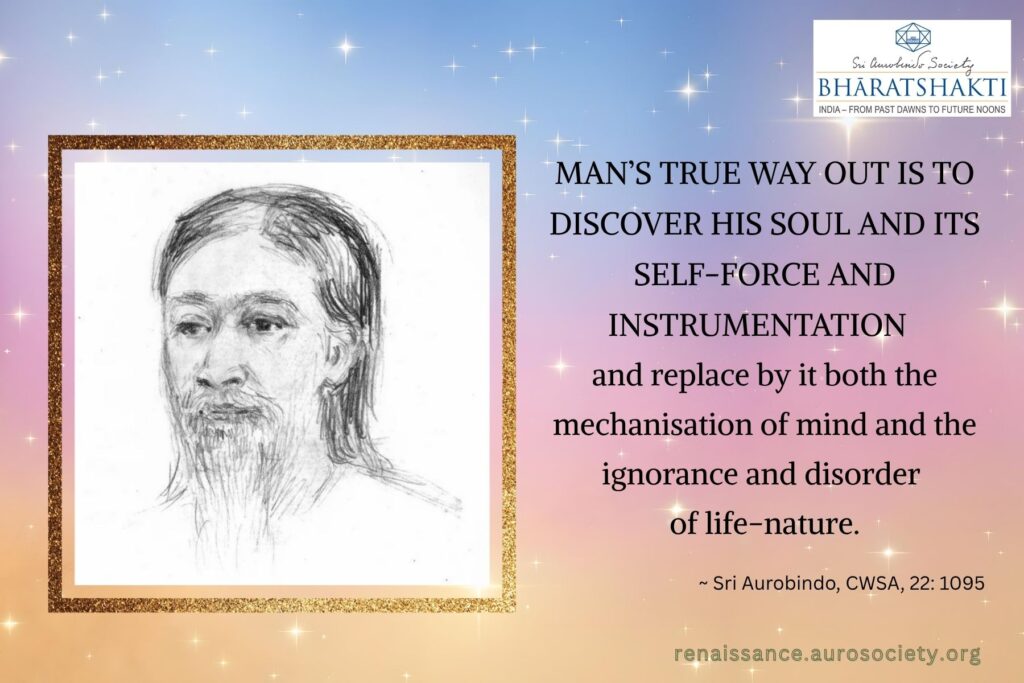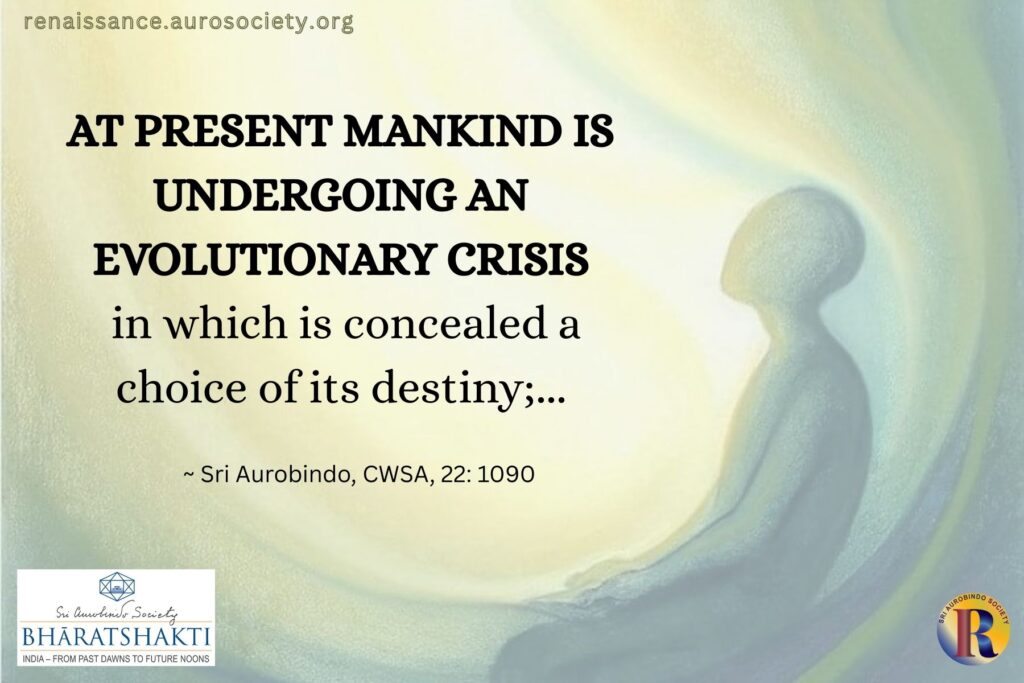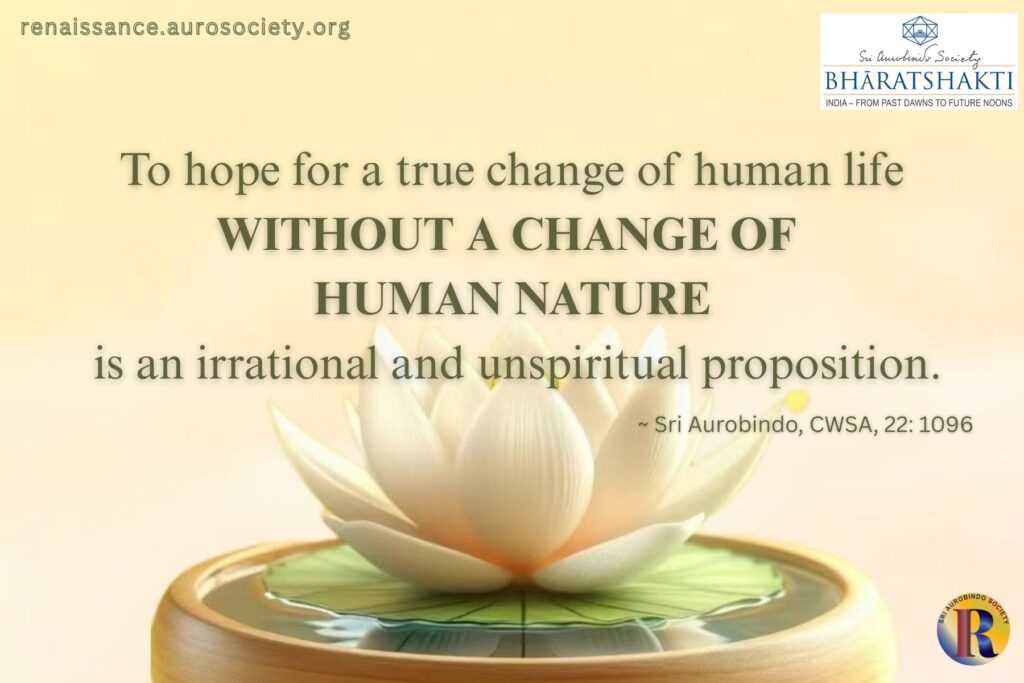Volume V, Issue 8
Author: Georges van Vrekhem
Editor’s Note: The author delivered this highly engaging and well-researched talk at Townhall in Auroville, in February 2011. The talk originally titled ‘The Kalki Avatar’ is included in the book Preparing for the Miraculous: Eleven Talks at Auroville, published by Stichting Aurofonds, 2011 (pp. 235-266).
We are presenting it in 5 parts so that each section of the author’s explanation gets fully appreciated by the sincere reader. In Part 1, the author gives an excellent summary of Sri Aurobindo’s explanation of the real meaning and purpose of Avatarhood. For the purpose of digital presentation, we have made a few minor formatting revisions.

PART 1
God must be born on earth and be as man
~ Sri Aurobindo, Savitri, CWSA, Vol. 34, p. 537
That man being human may grow even as God.
According to the Hindu tradition, the evolution of life and consciousness on Earth has been supported by a succession of Avatars: the Fish, the Tortoise, the Boar, the Man-Lion, the Dwarf, Rama-with-the-Ax, Rama, Krishna, the Buddha, and the last one, Kalki, who according to the tradition is still to come.
Question: If Sri Aurobindo and the Mother were Avatars, or an Avatar, what or which Avatars or Avatar were they?
1. Avatar
Sri Aurobindo has given clear definitions of the Avatar and Vibhuti on many occasions. For instance:
“There are two sides of the phenomenon of Avatarhood, the Divine Consciousness and the instrumental personality. The Divine Consciousness is omnipotent but it has put forth the instrumental personality in Nature under the conditions of Nature and it uses it according to the rules of the game – though also sometimes to change the rules of the game.”
~ CWSA, Vol. 28, p. 472
“An Avatar, roughly speaking, is one who is conscious of the presence and power of the Divine born in him or descended into him and governing from within his will and life and action; he feels identified inwardly with this divine power and presence. A Vibhuti is supposed to embody some power of the Divine and is enabled by it to act with great force in the world, but that is all that is necessary to make him a Vibhuti: the power may be very great, but the consciousness is not that of an inborn or indwelling Divinity.”
~ ibid, p. 485
“… in the phenomenon of Avatarhood there is a Consciousness behind, at first veiled or sometimes perhaps half-veiled, which is that of the Godhead and a frontal consciousness, human or apparently human or at any rate with all the appearance of terrestriality, which is the instrumental personality.”
~ ibid., p. 497
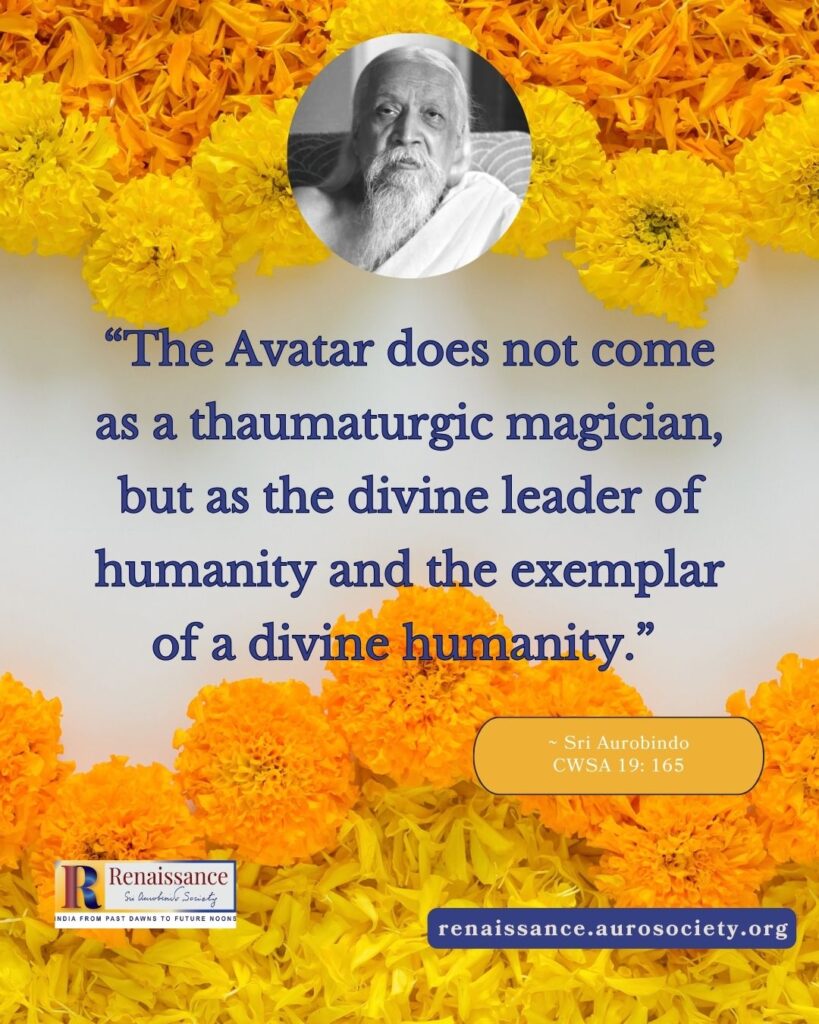
In the effort to understand and explain the phenomenon of the Avatar the accent has been laid by some on his divinity, by others on his humanity, and by many more on something in between, covering the whole range from divine to human. Although the Avatar is often thought to be a specifically Hindu concept, the most extensive documentation about the various interpretations of the Avatar-phenomenon is to be found in Christianity. (In Essays on the Gita, Sri Aurobindo repeatedly names as Avatars Krishna, Buddha and Christ.)
In Christianity its founder is seen – mostly unawares – as an Avatar, for Christ is at the same time the Son of God and the Son of Man. The fundamental difference with Hinduism is that in Christianity Christ is held to be the only Avatar, the one and only Redeemer of a fallen humanity. From a human teacher and miracle worker the theologians gradually exalted him into a divine being, one in essence with God the Father, therefore omniscient and omnipotent, capable of doing anything also while in the human body. A similar belief exists in some forms of Hinduism about its divine incarnations.
Sri Aurobindo countered such notions quite forcefully.
“The Avatar does not come as a thaumaturgic magician, but as the divine leader of humanity and the exemplar of a divine humanity.”
~ CWSA, Vol. 19, p. 165
“Certain conditions have been established for the game and so long as those conditions remain unchanged things are not done…”
~ CWSA, Vol. 28, p. 477
As the Mother said:
“The true divine power has organized the world according to a certain plan, and in that plan was not included that things would happen in an illogical [i.e. random] way; otherwise from the very beginning the world would have been illogical and it is not.”
~ CWM, Vol. 4, p. 83
“An Avatar or Vibhuti have the knowledge that is necessary for their work, they need not have more,” wrote Sri Aurobindo. He added, that there was absolutely no reason why Buddha should know what was going on in Rome. “An Avatar even does not manifest all the Divine omniscience and omnipotence; he has not come for any such unnecessary display; all that is behind him but not in the front of the consciousness” (CWSA, Vol. 28, p. 478).
“My own idea of the matter is that the Avatar’s life and actions are not miracles. If they were, his existence would be perfectly useless, a mere superfluous freak of Nature. He accepts the terrestrial conditions, he uses means, he shows the way to humanity as well as helps it.”
~ Sri Aurobindo, CWSA, Vol. 35, p. 413
“We know whatever we have to know for our work,” said Sri Aurobindo to the disciples gathered around him after the accident with his leg (Nirodbaran: Talks with Sri Aurobindo, 14 December 1938). And to a disciple who wrote, “We consider you omniscient,” he answered with a touch of irony: “You do not expect me, surely, to know how many fishes the fishermen of Pondicherry have caught, or how much money they have made of it?
On another occasion he chose as an example of his ignorance what Lloyd George, a famous British politician at the time, had had for breakfast. “Because [the Divine] chooses to limit or determine his action by conditions, it does not make him less omnipotent. His self-limitation is itself an act of omnipotence.” (CWSA, Vol. 28, p. 476)
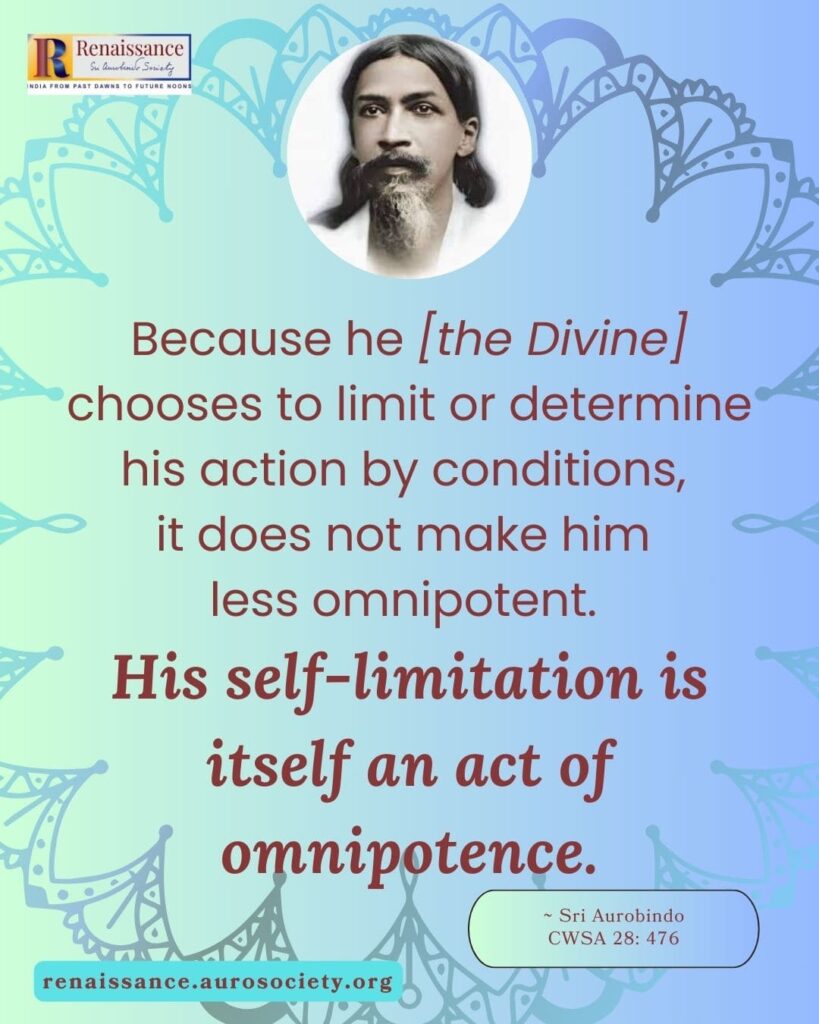
Another topic in the 3rd and 4th century theological controversies was the constitution of Christ, the God-Man. The standpoint, for instance, of the “heretic” sect of the Sabellians, was that Christ was fully and effectively God, also when in his human body, and that consequently, being God, he could not suffer.
The same point was made in the 1930s to Sri Aurobindo, who had to state, “The Divine when he takes on the burden of terrestrial nature, takes it fully, sincerely, and without any conjuring tricks or pretence.” (ibid., p. 478)
“X seems to say that there is no way and no possibility of following [the example of the Avatar], that the struggles and sufferings of the Avatar are unreal and all humbug – there is no possibility of struggle for one who represents the Divine. Such a conception makes nonsense of the whole idea of Avatarhood; there is then no reason in it, no necessity in it, no meaning in it. The Divine being all-powerful can lift people up without bothering to come down to earth. It is only if it is part of the world-arrangement that he should take upon himself the burden of humanity and open the Way that Avatarhood has any meaning.”
~ ibid., p. 476
“If they [the difficulties and struggles of the Avatar] are shams, they have no value for others or for any true effect. If they have no value for others or for any true effect, they are perfectly irrational and unreal and meaningless. The Divine does not need to suffer or struggle for himself; if he takes on these things it is in order to bear the world-burden and help the world and men; and if the sufferings and struggles are to be of any help, they must be real.
“A sham or falsehood cannot help. They must be as real as the struggles and sufferings of men themselves—the Divine bears them and at the same time shows the way out of them. Otherwise his assumption of human nature has no meaning and no utility and no value. It is strange that you cannot understand or refuse to admit so simple and crucial a point. What is the use of admitting Avatarhood if you take all the meaning out of it?”
~ ibid., p. 472
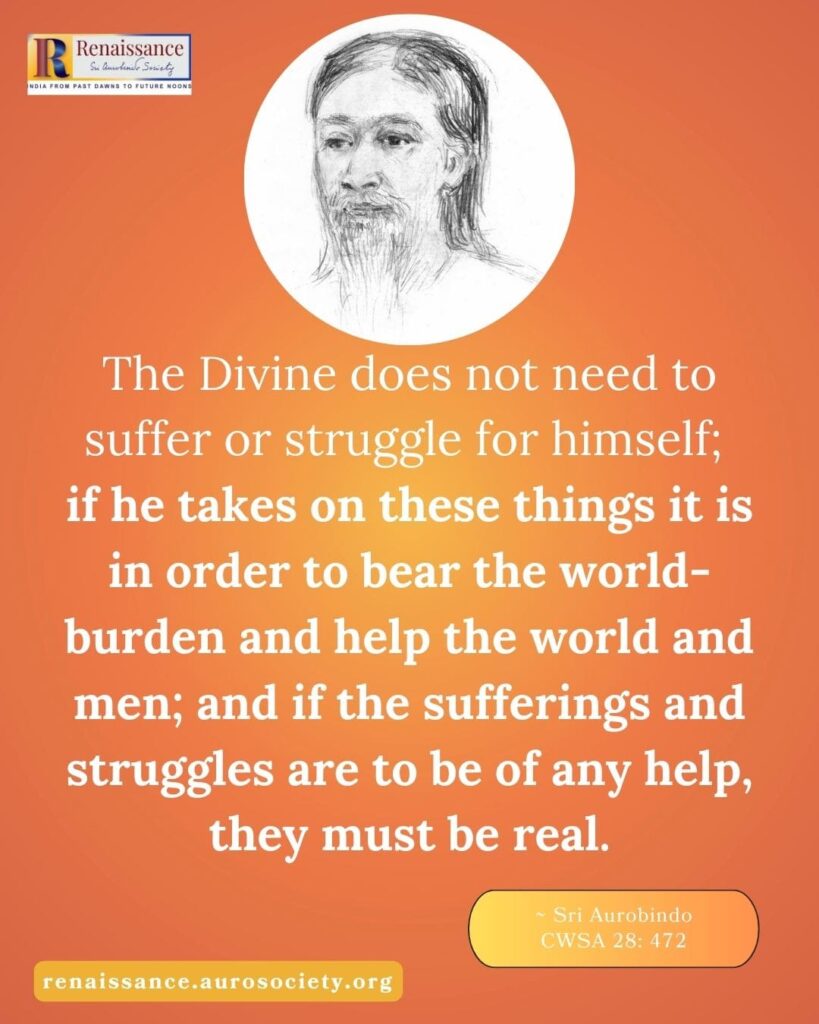
If an Avatar did only seem to take upon himself the struggles and sufferings of mankind “all I have done or the Mother has done is a mere sham – sufferings, struggles, conquests, defeats, the Way formed, the Way followed, the call to others to follow, everything – it was all make-believe since I was the Divine and nothing could touch me and none follow me.” (CWSA, Vol. 35, p. 416)1
An Avatar, according to Sri Aurobindo, “is never in fact merely a prophet, he is a realizer, and establisher … of something essential and radical needed for the terrestrial evolution which is the evolution of the embodied spirit through successive stages towards the Divine” (CWSA, Vol. 28, p. 491). “For my yoga is done not for myself who need nothing and do not need salvation or anything else, but precisely for the earth consciousness, to open a way for the earth consciousness to change.” (CWSA, Vol. 35, p. 405)
“The crisis in which the Avatar appears, though apparent to the outward eye only as a crisis of events and great material changes, is always in its source and real meaning a crisis in the consciousness of humanity when it has to undergo some grand modification and effect some new development. For this action of change a divine force is needed…”
~ Sri Aurobindo, CWSA, Vol. 19, p. 168
It should be kept in mind that the real stuff of things is the Spirit, and that therefore everything exists and changes within the Spirit, also what we, human beings, perceive as material.
“When the crisis has a spiritual seed or intention, then a complete or partial manifestation of the God-consciousness in a human mind and soul comes as its originator or leader. That is the Avatar.”
~ ibid., p. 169
“The Avatar is not bound to do extraordinary actions, but he is bound to give his acts or his work or what he is – any of these or all – a significance and an effective power that are part of something essential to be done in the history of the earth and its races.”
~ CWSA, Vol. 28, p. 490


Notes
- This is a decisive argument against the thesis that Christ did not die on the cross, as it is against the opinion that Christ, being God, did not suffer on the cross. If his suffering was not real, his avataric mission made no sense.
CONTINUED IN PART 2
~ Design: Beloo Mehra

